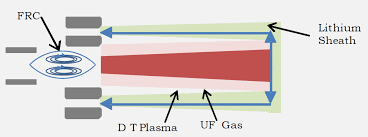
Breaking News
 $26M Frozen on Blockchain - With One Click
$26M Frozen on Blockchain - With One Click
 Italy are on national strike shutdown rejecting digital enslavement...
Italy are on national strike shutdown rejecting digital enslavement...
 The following U.S. states are currently using the rebranded "Reporty Homeland Security" so
The following U.S. states are currently using the rebranded "Reporty Homeland Security" so
 NATO Chief Urges Europe To Prepare For Long-Term World War With Russia, China, Iran & North Korea
NATO Chief Urges Europe To Prepare For Long-Term World War With Russia, China, Iran & North Korea
Top Tech News
 HUGE 32kWh LiFePO4 DIY Battery w/ 628Ah Cells! 90 Minute Build
HUGE 32kWh LiFePO4 DIY Battery w/ 628Ah Cells! 90 Minute Build
 What Has Bitcoin Become 17 Years After Satoshi Nakamoto Published The Whitepaper?
What Has Bitcoin Become 17 Years After Satoshi Nakamoto Published The Whitepaper?
 Japan just injected artificial blood into a human. No blood type needed. No refrigeration.
Japan just injected artificial blood into a human. No blood type needed. No refrigeration.
 The 6 Best LLM Tools To Run Models Locally
The 6 Best LLM Tools To Run Models Locally
 Testing My First Sodium-Ion Solar Battery
Testing My First Sodium-Ion Solar Battery
 A man once paralyzed from the waist down now stands on his own, not with machines or wires,...
A man once paralyzed from the waist down now stands on his own, not with machines or wires,...
 Review: Thumb-sized thermal camera turns your phone into a smart tool
Review: Thumb-sized thermal camera turns your phone into a smart tool
 Army To Bring Nuclear Microreactors To Its Bases By 2028
Army To Bring Nuclear Microreactors To Its Bases By 2028
 Nissan Says It's On Track For Solid-State Batteries That Double EV Range By 2028
Nissan Says It's On Track For Solid-State Batteries That Double EV Range By 2028
Pulsed Fission-Fusion (PuFF) Propulsion Concept gets Phase 2 NIAC funding

The resulting deflagration expands against a magnetic nozzle to produce thrust and generate recharge energy for the next pulse. A z-Pinch is a device that is commonly used to compress laboratory plasmas to high pressures (~1 Mbar) for very short timescales (~100 ns). An electrical discharge produces a high axial current along the outer surface of a column of plasma; this current in turn generates a very strong toroidal magnetic field. This self-generated magnetic field interacts with the axial current via the Lorentz force and radially compresses the plasma column, bringing it to very high densities and temperatures. This team is exploring a modified Z-pinch geometry as a propulsion system by encasing the fission- fusion target in a sheath of liquid lithium, providing a current return path. Numerical results have been promising, the level of compression is sufficient to reach fission criticality.

 Carbon based computers that run on iron
Carbon based computers that run on iron

